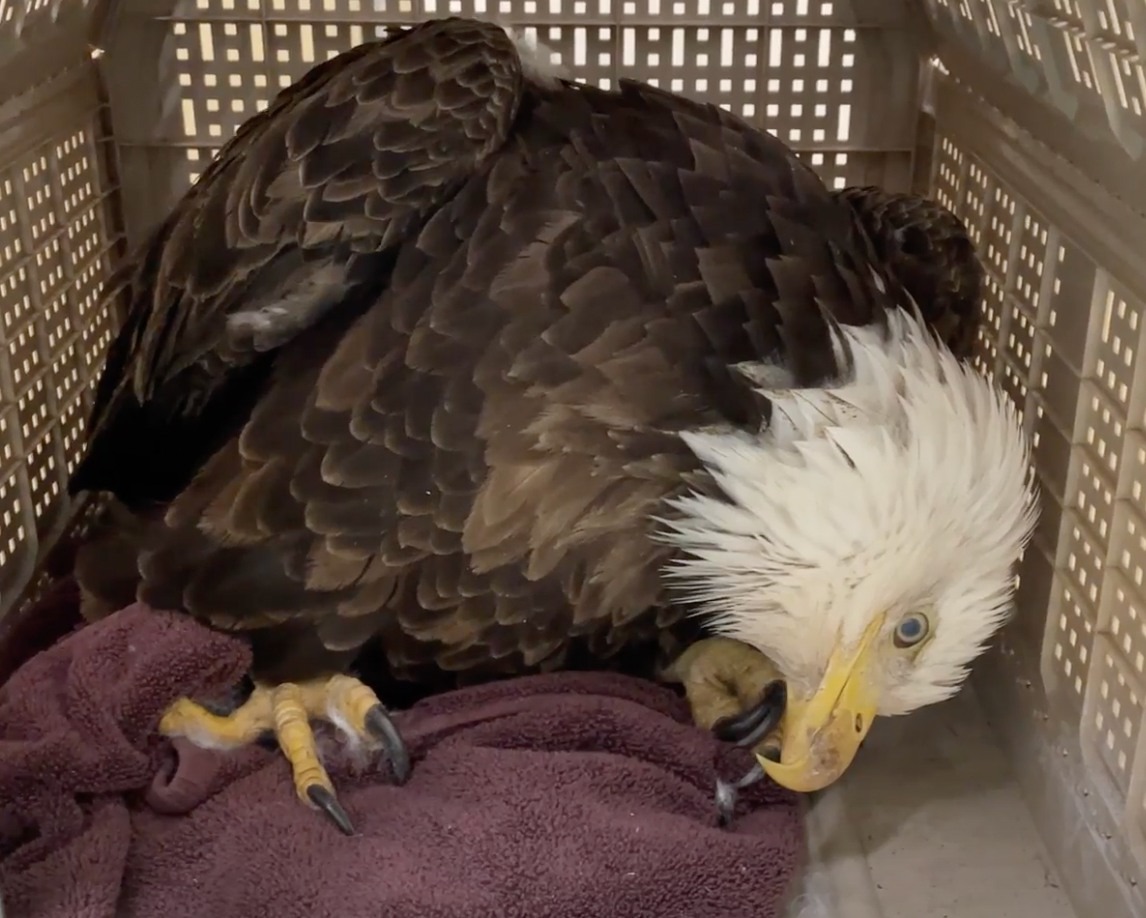A pandemic among humans closed off the Raptor Center to the public for almost two years. Then, just as the University of Minnesota bird rescue/education center was preparing for the return of visitors, an "unprecedented" pandemic among birds hit.
“We’ve got a staff that had super-hero powers during the height of Covid," says Raptor Center director Victoria Hall. "We were just coming out of that, and about to increase tours, and now we have closed to the public."
The U.S. Department of Agriculture is still figuring out how to report testing numbers, Hall says, meaning no national maps exist to reflect the what bird rehab centers are experiencing. So, to help raise awareness and increase transparency, the Raptor Center began sharing their avian influenza findings Wednesday via social media. Between March 28 and April 26, the center registered positive cases among: 32 great horned owls, 20 bald eagles, 10 red-tailed hawks, one barred owl, one Cooper's hawk, and one turkey vulture. The fatality rate, whether from the flu itself or humane euthanasia, is almost 100%.
But that latest batch of figures doesn't reflect how historically deadly the virus is getting. "Nearly all" birds that were brought into the Raptor Center over the past two tested positive, Cain says. "We’re definitely in a ramping-up phase, the birds are just so sick," she says. Minnesota's last avian influenza outbreak occurred in 2015. The Raptor Center, which annually treats around 1,000 birds, tested every incoming patient that year and recorded zero positives, Cain says.
“This outbreak is interesting, in an epidemiological sense, because usually these outbreaks are happening in certain parts of the country," she says. "This one is widespread, and it’s continuing to evolve. We’re seeing numbers in wild birds we’ve never seen before.”
Hall says patient admissions are currently three times higher than normal. To help protect the 27 educational birds that live and work at the Raptor Center, staffers have opened a separate triage building for testing, quarantine, and euthanasia.
The horrific scope of this outbreak was first brought to our attention by Glue Girl, an animal-rights activist who interrupted the April 12 Timberwolves playoff game to draw attention to Glen Taylor-owned Rembrandt Farms roasting 5.3 million sick birds alive in Iowa.
On Thursday, the human toll of factory farming was revealed by The Guardian: Rembrandt, which is owned by one of the richest men alive, fired the 200+ workers it ordered to carry out the controversial slaughter. “It’s a company that makes millions of dollars. I guess I shouldn’t be surprised that it doesn’t care about people," former plant supervisor Oscar Garcia told the paper.
The Raptor Center will continue to post bird flu updates every Wednesday on Facebook. As a precaution, Hall recommends that Minnesotans take down feeders, which helps stop artificial congregations of potentially infected birds. If you see a sick or injured bird, she urges you to call the DNR or the Raptor Center before touching it; proper PPE is required to help curb the viral spread. Signs of infection include seizures, vocalizing, tremors, or total unresponsiveness, Hall says, adding that these birds appear "very, very sick" physically.
“We’re trying to fill in the critical knowledge gaps," she says. "We’re going to be better prepared to take care of these birds in the future based on what we’re learning now, because something good has to come out of this, right?”







